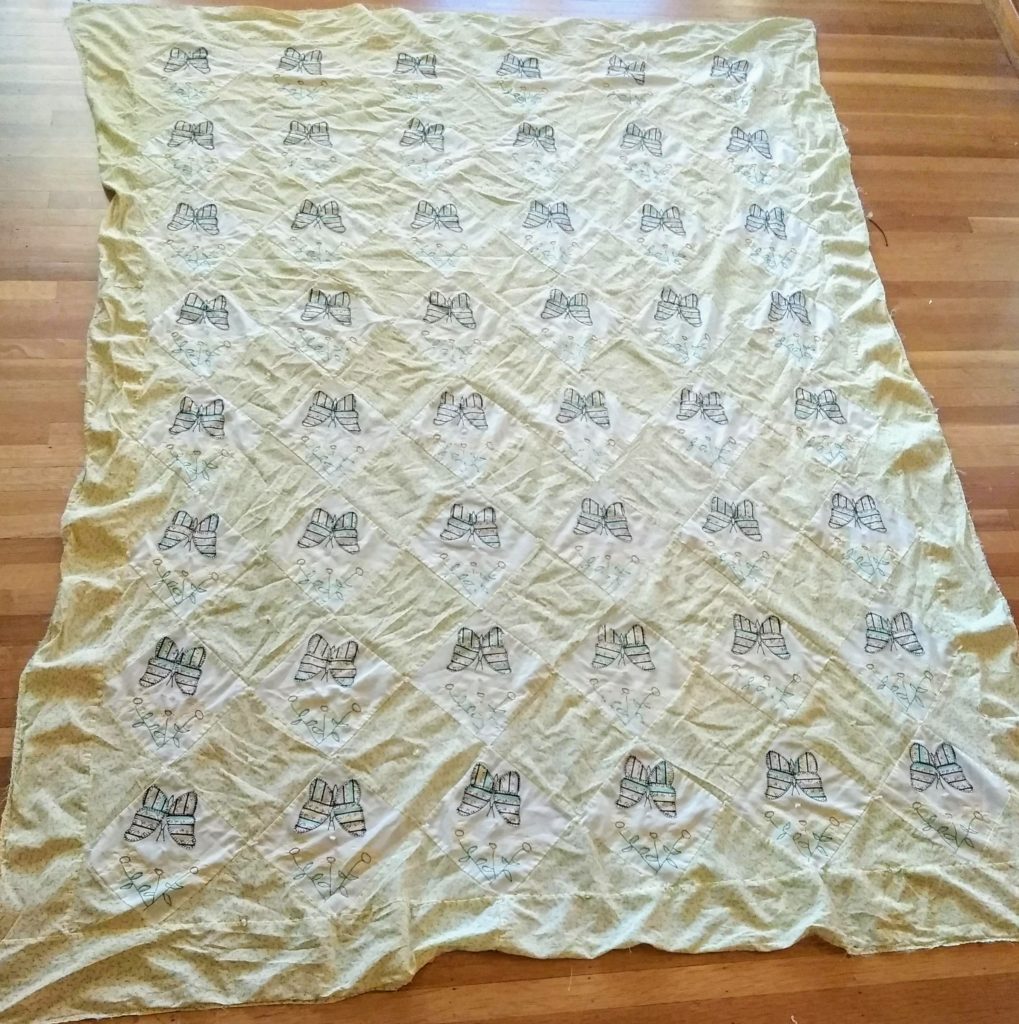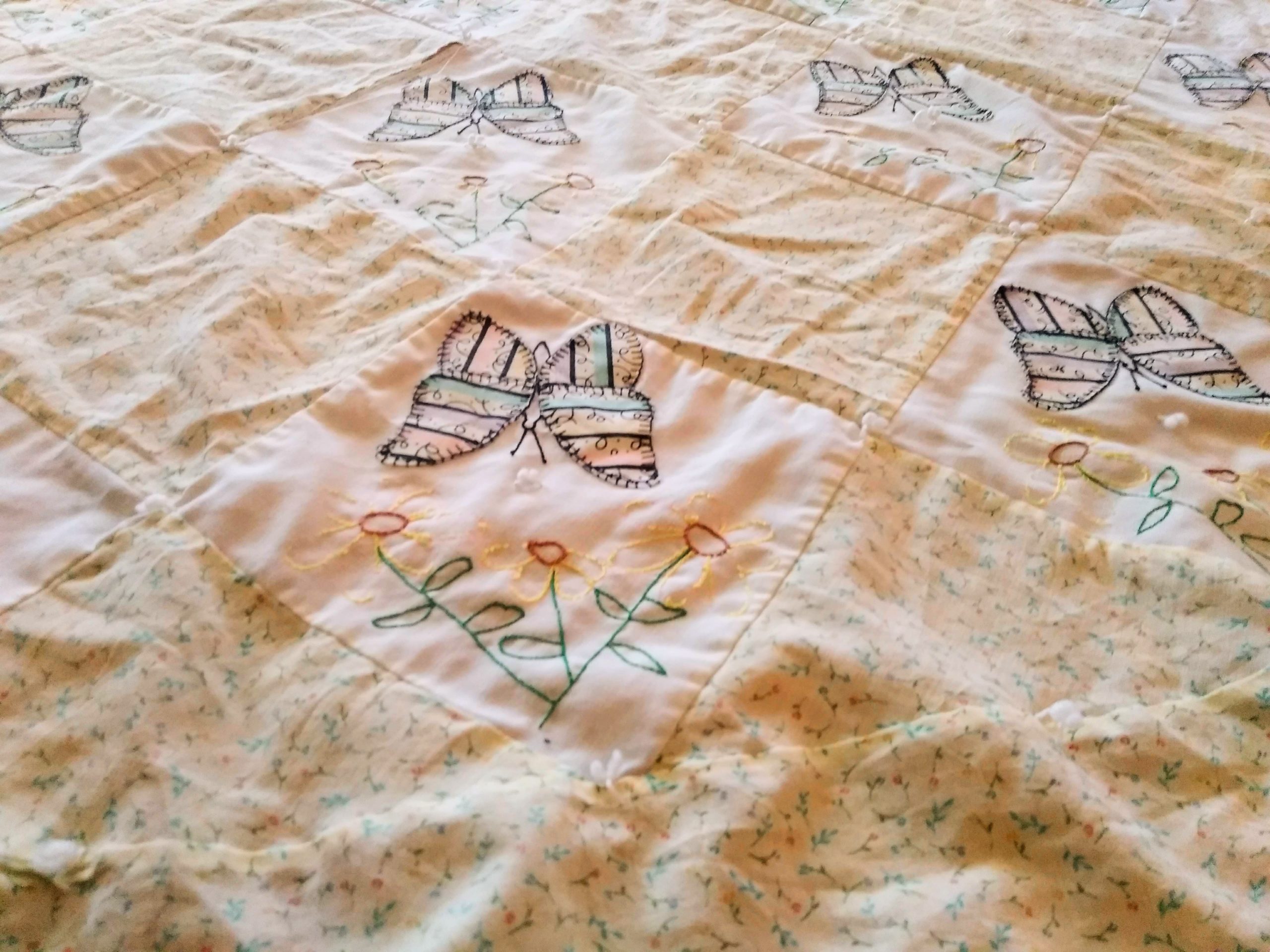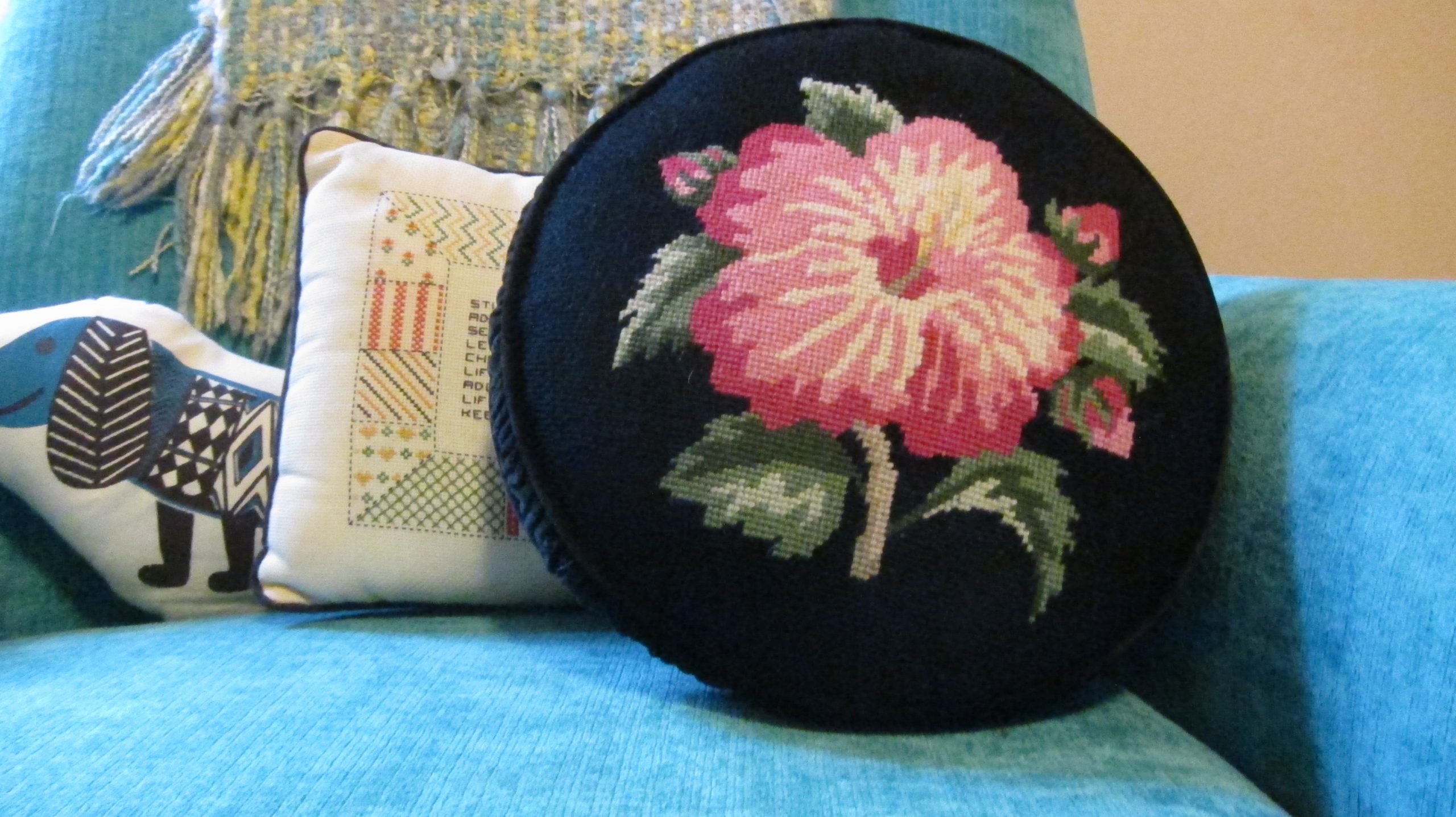Dear Textiles,
I had a needle and thread in my hand before I ever learned to read or write. They are the one thing I feel like I have in common with my family outside of my blue eyes and the ubiquitous “Kramer nose”. My family doesn’t say “I love you” to one another with words so much as we say it with sets of embroidered tea towels or crocheted afghans.
For my fourth birthday, I received toy trucks from my uncles and this yellow quilt with appliqued butterflies on it from my grandmother. To be honest, the toy trucks were more my speed. I hate yellow, and I’ve never really like butterflies. Regardless, this quilt warmed my bed throughout my childhood.
As I got older, spring breaks and summers found me up at my grandparents’ house “on the hill”. I alternated between shadowing my grandpa as he puttered around the back yard, and standing over a quilt sandwiched on a tabletop alongside my mom and grandmother. Like birds of prey, we dove down into the layers of fabric and batting with curved needles, scooping them together with short lengths of yarn.
In my family, I grew into the one who got good grades, the one who graduated from college, and the one who moved away. First, it was three hours away. Now, it’s states away. As I loaded my car to move that first time – and every time I’ve done it since – my back seat was full of blankets and quilts made by the women in my family.
The last few times I visited my parents, the same yellow, butterfly appliqued quilt was still on my bed. Twenty-three years later, it was threadbare in places, and the batting had grown lumpy and shredded. Armed with a seam ripper apiece, my mom and I sat in front of the TV on New Year’s Eve, removing the binding and the original ties to separate the quilt top. It came home to Oregon with me.
I’ll probably never say “I love you” with words, but I feel love as I am slowly working my way through restoring this quilt top, embroidering yellow flowers in a copycat of my grandma’s perfect and tiny stitches, and mending places the fabric is worn through. Eventually, I’ll get to re-quilting and binding this quilt.
One thing is for sure: I’ll never be cold.
Love,
Lora
(Note: You can find Lora on Instagram at @loramakesthings.)





